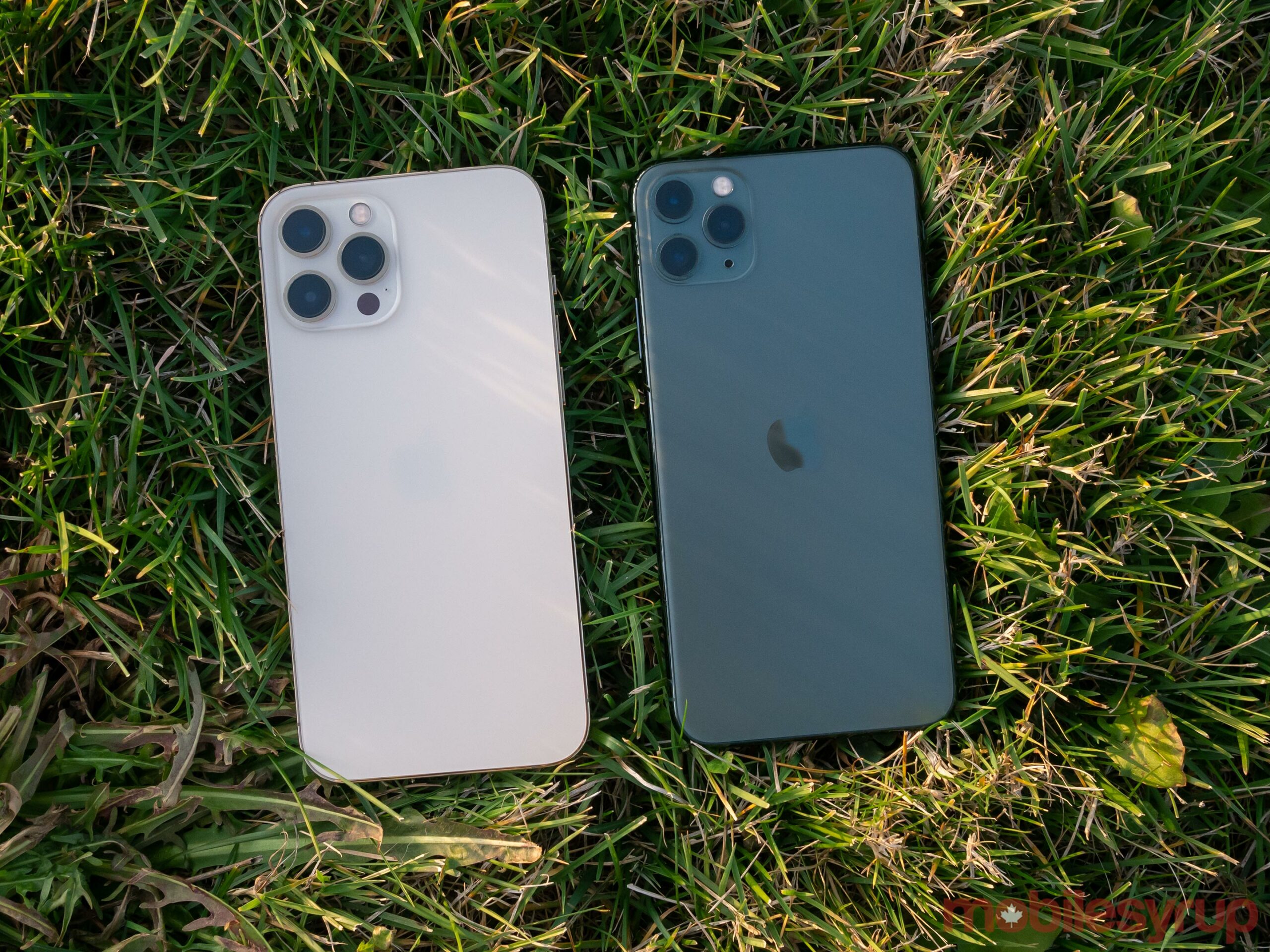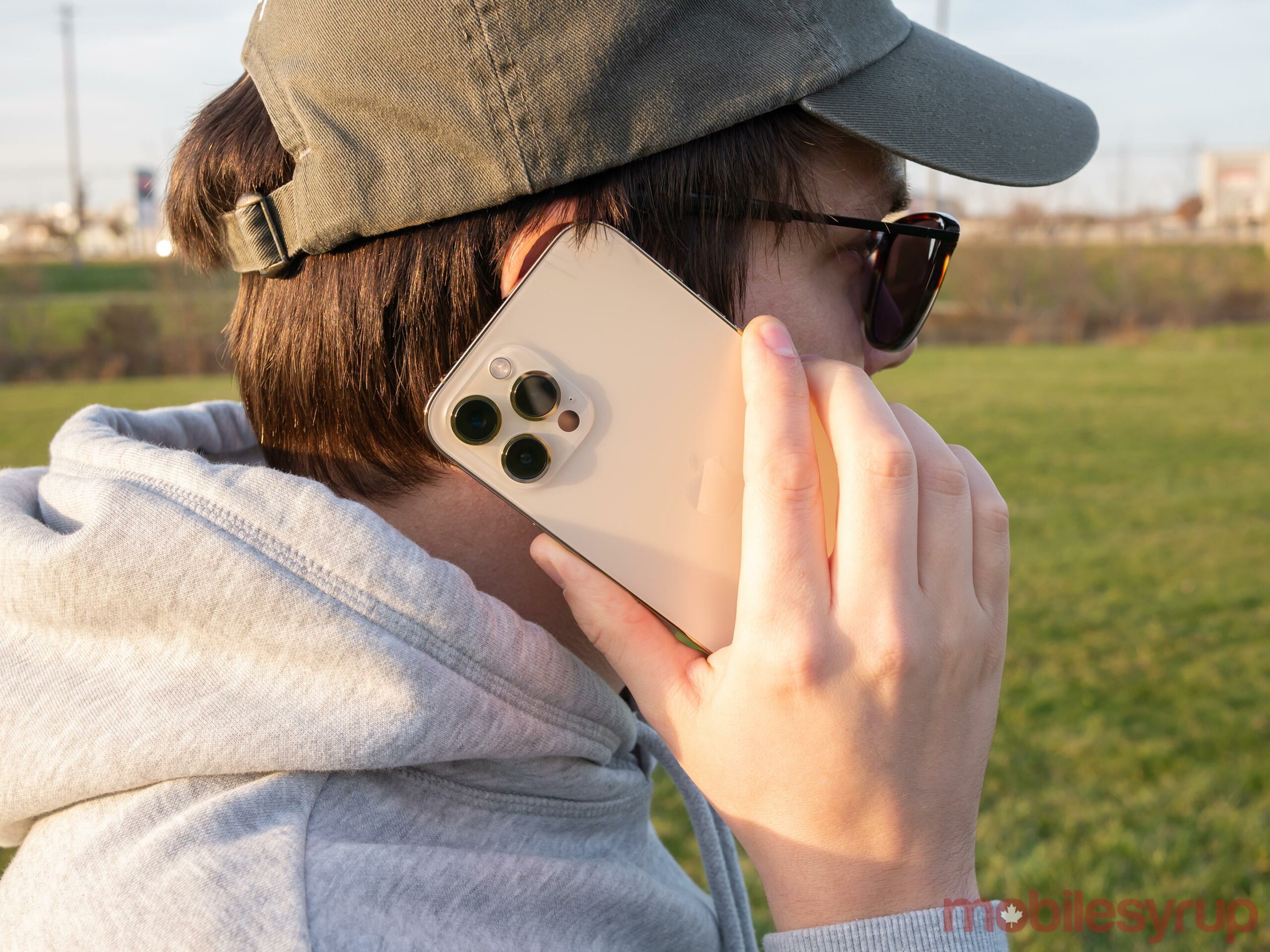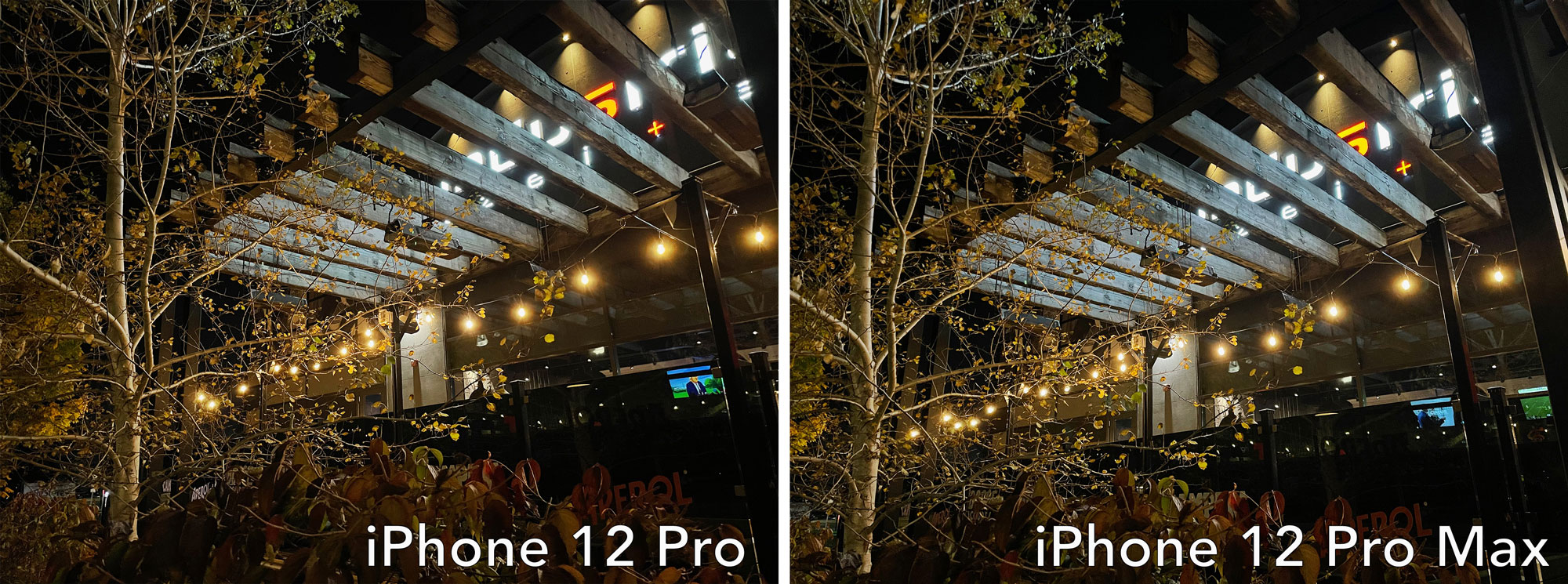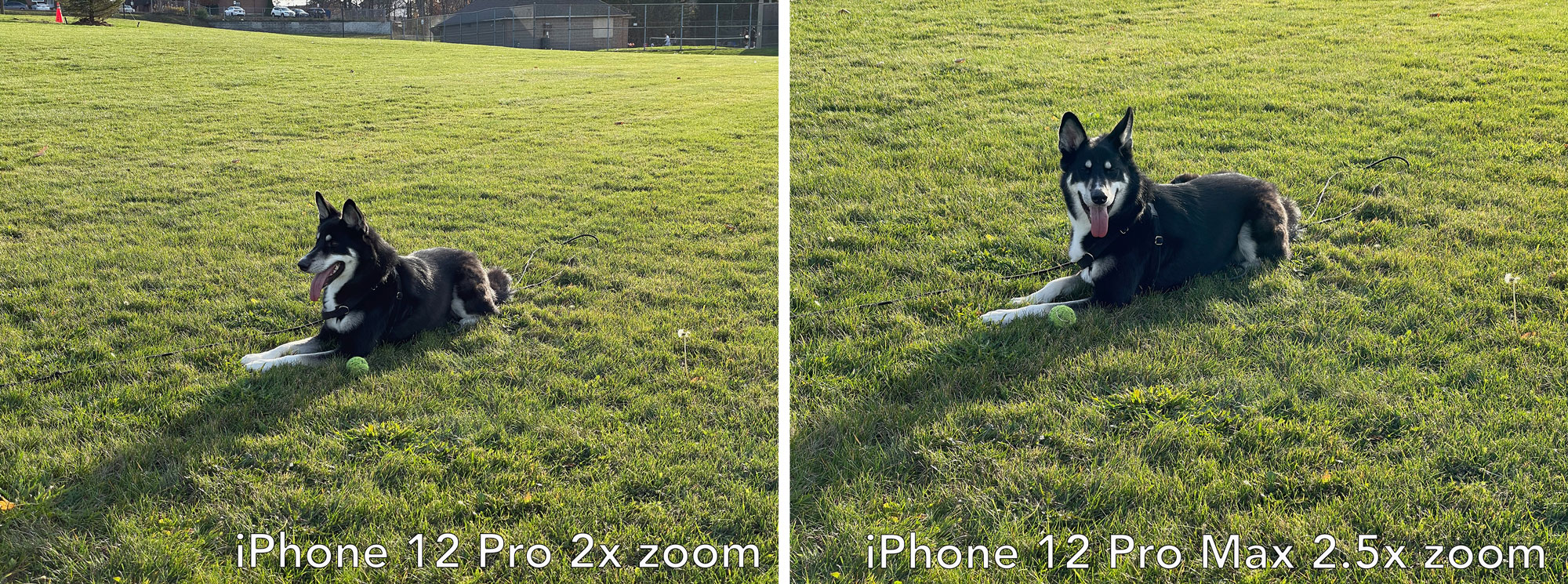
Apple’s new iPhone 12 Pro Max is an absolute photography beast.
That said, it’s important to note that unless you’re really into snapping pictures with your smartphone, the iPhone 12 Pro Max’s minor camera upgrades over the iPhone 12 Pro likely aren’t worth its $1,549 price tag.

The 6.7-inch iPhone 12 Pro Max looks identical to its smaller 6.1-inch counterpart, including the grease attracting stainless steel band running around its new flat edges. While I like the slightly washed-out ‘Gold’ iPhone 12 Pro Max Apple sent me, its almost glowing gold stainless steel edges are a little too flashy for my taste. Thankfully, since I put all my smartphones in cases, this isn’t really that big of a concern for me. The iPhone 12 Pro Max is also available in matte ‘Graphite,’ ‘Silver,’ and, of course, ‘Pacific Blue’ colours, just like the iPhone 12 Pro.
The only other subtle design difference beyond its size is that its rear-facing three-camera array’s individual 12-megapixel lenses stick out by a few millimetres more than the iPhone 12 Pro Max’s. The difference is subtle, but you can feel it when you run your finger over each lens.

The display is just as great-looking as the iPhone 12 Pro’s, though it is worth noting that instead of 6.5-inches like with last year’s iPhone 11 Pro Max, the new iPhone 12 Pro Max comes in at 6.7-inches. The 12 Pro Max is slightly taller than the iPhone 11 Pro Max, but manages to feature an 87.4 percent screen-to-body ratio, a slight improvement over last year’s 83.7 percent screen-to-body ratio with the iPhone 11 Pro Max. While only a marginal overall increase in display size, you really notice the iPhone 12 Pro Max’s screen is larger when looking at it directly beside the iPhone 11 Pro Max’s display.
This makes watching videos on Netflix or YouTube, typing and performing nearly any task a great experience as long as you’re fine with holding the device with two hands — reaching the corner of the smartphone’s display with one hand will be nearly impossible for almost everyone. I also generally found the iPhone 12 Pro Max easier to hold thanks to its squared-off edges despite its slightly larger size.
It’s worth keeping in mind the iPhone 12 and iPhone 12 Pro already measure in at a sizeable 6.1-inches. This is more than enough screen real-estate for most people when it comes to a smartphone and could make the iPhone 12 Pro Max’s 6.7-inches feel like overkill. With all this in mind, it remains strange that Apple still hasn’t brought some form of multi-tasking to iOS, especially given the iPhone 12 Pro Max’s expansive 6.7-inch screen would be perfect for it.

It’s really the iPhone 12 Pro Max’s photography capabilities where things start to get more interesting, though again, only those that are interested in the minutia of terms like aperture and sensor shift should consider the Pro Max a viable option.
The larger smartphone’s primary sensor is bigger and utilizes 1.7-micron pixels, allowing it to capture more light thanks to its 47 percent larger sensor over last year’s iPhone 11 Pro Max. Generally, low-light performance with the iPhone 12 Pro Max is slightly better than what the iPhone 12 Pro is capable of. This means in some cases, night mode doesn’t need to turn on in order for me to snap a photo. However, as you can see from the comparison below, the difference is usually overall pretty negligible.

The iPhone 12 Pro’s wide camera is on the left and the iPhone 12 Pro Max’s wide shooter is on the right. The iPhone 12 Pro Max handles highlights slightly better and features generally overall sharper focus, especially in the foliage. However, the difference in quality between the two photos is negligible.
There are other photography-focused upgrades as well, including that the Phone 12 Pro Max’s telephoto lens comes in at 65mm f/2.2 compared to the iPhone 12 Pro’s 52mm f/2.0. While the aperture is smaller and lets in less light, its longer focal length allows the Pro Max to shoot 2.5x optical zoom. I enjoy shooting at 2.5x zoom and have found that it comes in handy frequently. That said, similar to a lot of the iPhone 12 Pro Max’s upgrades over the iPhone 12 Pro, 0.5x of additional zoom really doesn’t change the composition of photos that much.
Other iPhone 12 Pro Max improvements include image stabilization technology more commonly found in DSLRs called ‘Sensor Shift.’ This technology moves the sensor around multiple axises to stabilize external motion.

The iPhone 12 Pro’s 2x zoom is on the left and the iPhone 12 Pro Max’s 2.5x zoom is on the right. While 2.5x zoom does allow you to get you closer to the subject you’re shooting, the difference isn’t dramatic.
Though this feature does make it easier to snap photos quickly, especially under low light, the most significant benefit is that, once again, night mode doesn’t need to turn on as often because the iPhone 12 Pro Max is capable of shooting at a slower shutter speed thanks to Sensor Shift.
This year, the iPhone 12 Pro Max is my favourite smartphone in Apple’s iPhone 12 lineup. I fall into the camp of appreciating these minor smartphone photography improvements, especially the marginally better low-light performance. I also like big phones because I spend a ton of time on my smartphone during the day browsing the internet, death scrolling through Twitter and watching YouTube.

As far as I’m concerned, the bigger the smartphone is, the better it comes to performing these tasks.
Apple’s iPhone 12 Pro Max starts at $1,549 CAD for the 128GB version. The 256GB iteration costs $1,689 and the 512GB version costs $1959. The iPhone 12 Pro Max will be available on November 13th.
For more on the iPhone 12 Pro Max, check out my full review of the iPhone 12 Pro and iPhone 12 Pro Max.
MobileSyrup may earn a commission from purchases made via our links, which helps fund the journalism we provide free on our website. These links do not influence our editorial content. Support us here.


